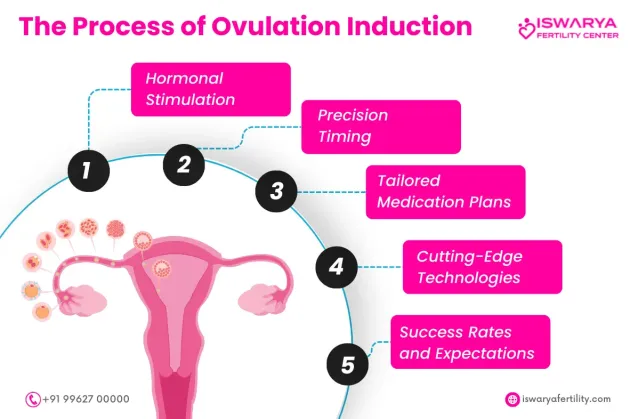
For couples trying to conceive, understanding ovulation is crucial. Ovulation—the release of a mature egg from the ovary—marks the peak time when conception is most likely. Properly tracking ovulation helps couples time intercourse effectively, increasing the likelihood of pregnancy. This blog explains why timing matters, how to track ovulation, and tips for maximizing conception success.
The Importance of Ovulation Timing in Conception
Ovulation typically occurs about midway through a woman’s menstrual cycle, although the exact timing can vary. Once an egg is released, it is viable for about 12 to 24 hours, while sperm can survive in the female reproductive system for up to five days. This means the “fertile window,” or the days when conception is most likely, is around five days before and on the day of ovulation. Timing intercourse within this window gives sperm the best chance to meet the egg.
How to Track Ovulation Effectively
- Calendar Method
Tracking your cycle on a calendar is a simple way to estimate ovulation. Generally, ovulation occurs about 14 days before the next menstrual period. For women with a 28-day cycle, ovulation may happen around day 14. However, cycles vary widely, so this method is best used in combination with other tracking techniques. - Basal Body Temperature (BBT)
Monitoring basal body temperature each morning before getting out of bed can help identify ovulation. A slight temperature increase (about 0.5-1°F) usually occurs after ovulation due to increased progesterone levels. Tracking BBT over several cycles can help pinpoint ovulation patterns, although it only indicates ovulation after it has happened. - Ovulation Predictor Kits (OPKs)
OPKs detect luteinizing hormone (LH) in the urine, which surges 24-36 hours before ovulation. These kits are very effective in predicting ovulation and can help couples time intercourse precisely. - Cervical Mucus Observation
During ovulation, cervical mucus becomes clear, slippery, and stretchy—often compared to raw egg whites. Checking cervical mucus daily can help identify fertile days. Increased cervical mucus volume and a change in texture can indicate the approach of ovulation. - Monitoring Physical Symptoms
Some women experience signs of ovulation, like mild cramping or discomfort on one side of the lower abdomen (known as mittelschmerz), breast tenderness, or an increase in libido. While these symptoms are less precise than other methods, they can help confirm fertile days.
Best Time to Conceive: Tips for Maximizing Success
- Focus on the Fertile Window
Since sperm can live for several days, having intercourse in the days leading up to ovulation and on the day itself maximizes conception chances. Aim to have intercourse every other day during this fertile window. - Avoid Stress and Maintain a Healthy Lifestyle
High stress levels and an unhealthy lifestyle can affect fertility. Eating a balanced diet, getting regular exercise, and managing stress can help optimize your body for conception. - Use Multiple Tracking Methods
Combining methods, like using OPKs along with cervical mucus observation, can give a clearer picture of your ovulation pattern. This approach reduces the chances of missing the fertile window due to cycle variations. - Consider Professional Advice
If tracking methods seem confusing or if conception takes longer than expected, consulting a fertility specialist can provide additional support and potentially identify any underlying issues.
Final Thoughts
Ovulation timing is a key factor in achieving pregnancy. Using a combination of tracking methods, understanding your cycle, and focusing on your fertile window can help increase your chances of conception. For couples actively trying to conceive, patience and consistency are essential—sometimes it takes a few cycles to align timing perfectly. By understanding ovulation and making small lifestyle adjustments, you’re setting yourself up for the best chance at a successful conception.

